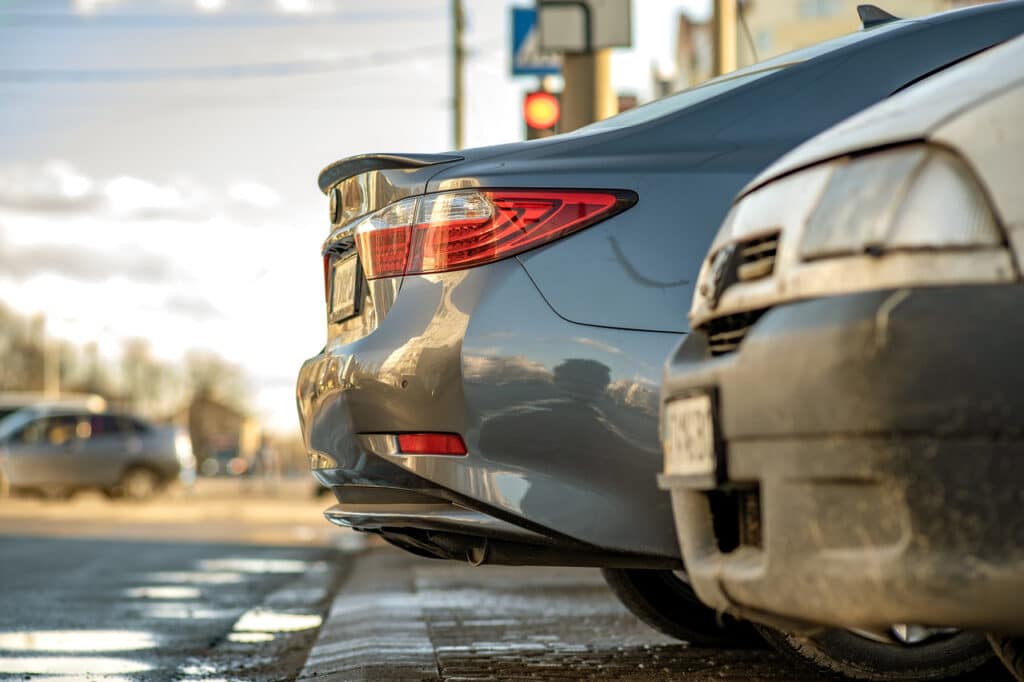Bumpers are designed to absorb impact and protect the rest of the vehicle from damage. They’re often the first line of defense in a collision and can prevent more costly damage to the car’s body and internal components. If you’ve recently realized you need plastic bumper repair, you might be wondering if the professional repair process is actually different for a metal bumper. Let’s find out!
Metal vs. Plastic Bumpers: The Basics
Metal and plastic bumpers have different compositions, which means they behave differently when damaged. Metal bumpers typically consist of steel or aluminum, while plastic bumpers are made from a variety of plastics including polypropylene, thermoplastic olefin, and polycarbonate.
Metal Bumpers
Metal bumpers are typically found on older cars and trucks, as well as heavy-duty vehicles such as pickup trucks. They’re known for their durability and strength, making them a popular choice for off-road or commercial use. However, they can dent easily upon impact and require more force to repair.
Plastic Bumpers
Plastic bumpers are most commonly found on modern cars and trucks. They’re lighter in weight than metal bumpers, which can improve fuel efficiency and handling. They also have built-in flexibility, which allows them to absorb impact and bounce back to their original shape. However, they are prone to cracking or breaking upon impact, which requires plastic bumper repair.
Most Common Types of Bumper Damage
Regardless of the material, bumpers can experience a range of damage in a collision. Some of the most common types of bumper damage include:
- Scratches and Scuffs: These minor surface marks can often be buffed or filled with touch-up paint.
- Dents and Dings: These occur when there is a visible depression or bulge on the surface of the bumper. They range in severity from small dents to larger creases.
- Cracks and Tears: These are more serious types of damage that occur when the bumper material is compromised and needs to be repaired or replaced.
- Bumper Separation: This happens when the bumper becomes detached from the rest of the vehicle, usually due to a strong impact.
The Differences Between Metal and Plastic Bumper Repair
While the types of damage may be similar, the process for repairing metal and plastic bumpers can differ. Here are the main distinctions between the two:
- Materials: Metal bumper repair often involves welding or patching with a special adhesive, while plastic bumper repair typically involves filling cracks and tears with a filler material.
- Cost: Generally, repairing a metal bumper is more expensive than a plastic bumper due to the cost of materials and labor. However, the severity of the damage and the type of repair needed will also impact the final estimate.
- Time: Metal bumper repairs can take longer than plastic bumper repairs due to the additional steps involved, such as welding or painting. Plastic bumper repairs may be completed more quickly, depending on the severity of the damage.
- Longevity: Metal bumpers are known for their durability and can often withstand multiple repairs without compromising the overall structure. Plastic bumpers, on the other hand, are prone to cracking or breaking again after a repair.
When Is it Time to Replace My Bumper Instead of Repairing It?
In some cases, a bumper may be too damaged to be effectively repaired. If the bumper has significant cracks or tears, it may not be structurally sound and needs full replacement for safety reasons. Similarly, if the cost of repairs exceeds the car value, it may be more cost-effective to replace the bumper entirely.
Get a Free Estimate for Your Bumper Repair at Valley Collision
Whether you have a metal or plastic bumper, the experienced technicians at Valley Collision can handle all types of repairs. We use high-quality materials and techniques to ensure your bumper is restored to its pre-damaged condition. Contact us today for a free estimate and let us get your car back on the road safely!

